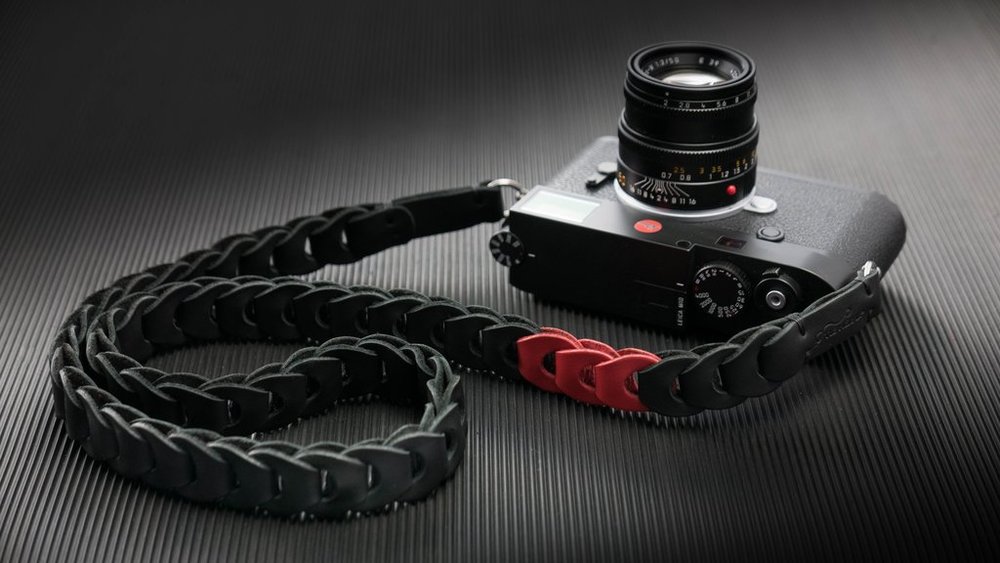
It turned out that last Saturday provided an opportunity to compare two of Leica’s most important new cameras and discuss the options with a couple of friends who have a distinctly different take on photography. The results were enlightening.

Friend No.1: George James, a great photographer who has been a lifelong Leica enthusiast, came up to London from his home in Hampshire and we arranged our usual brunch at Henry’s Bar in Piccadilly. Now George is a one-camera man (unlike the fickle Evans who uses this blog’s voracious appetite for evaluation and comparison as an excuse for butterfly tendencies) and the current object of his satisfaction is a lovely silver-chrome M-P — the latest M240 version.
Legendary
If he’s satisfied with one camera, he does split his lens loyalties down the middle. All-time favourite is the 50mm App-Summicron-M ASPH, generally acknowledged to be one of the best, if not the best, M lenses in the current catalogue. I agree with his assessment. Second is another fifty, the legendary f/0.95 Noctilux. George loves portraiture and finds the 50mm focal length to be the ideal compromise between general use and portraits. Also, it has to be said, George can make that Nocti sing on the M-P, even when shooting wide open to achieve the impressive degree of subject separation for which this lens is renowned. Yet even he is the first to acknowledge that it is difficult to get consistently accurate focus with the rangefinder.

Fortified with a couple of Henry’s Full-English offerings, George and I strolled the hundred yards or so up to Berkeley Square and the nearby Leica Mayfair store in Bruton Place. I wanted to get George’s first impressions on the new M10. Would this be the camera to succeed the M-P in his affections?

Viewfinder
I got some interesting insights, well beyond what I was expecting. George immediately fell in love with the M10. This camera does feel subjectively much smaller than its rather portly predecessor. Everyone notices this. It’s like a Leica film camera, much the same as an M6 and little bigger than even an M3. We know that it is identical in size to an M7.
But what impressed George more than anything was the reworked rangefinder. Coming straight from the M240, he immediately commented on the improved brightness. And he recognised that the image is bigger and more comfortable to view for glasses wearers. Even the 28mm framelines are now completely visible; previously I’ve never been able to see them. Impressively, too, the M10’s brighter viewfinder performs more accurately in poor light. We borrowed a Noctilux from the display cabinet and George found this rather temperamental lens easier to focus inside the store than he did with it mounted on the M240. And this is a Nocti expert’s view.
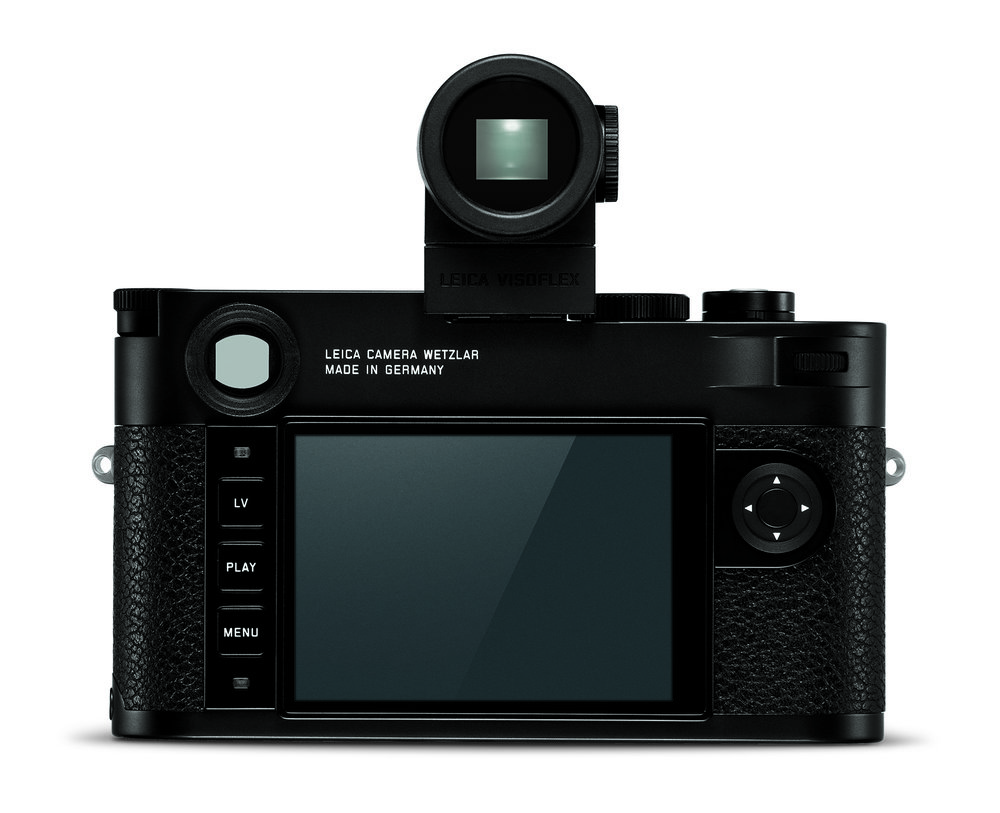
All round, George is enthusiastic about the M10. But there was a sideshow. I wanted to try the new 50mm Summilux-SL, the first native prime for the SL camera. Would it be worthwhile as a companion for my own SL?

After playing with it I am not convinced. This is a huge lens, heavy and long, even without the rather dominant hood. In comparison with its little brother, the Summilux-M, this is a giant of an optic. But it does do autofocus. This, though, is a bit like the curate’s egg, partly bad and partly excellent. The ‘Lux was noticeably slow to achieve focus in the store; outside it was quicker but by no means what you would call fast. It is disappointing. I’m comparing it in my own mind, perhaps unfairly, with the Olympus f/1.2 25mm, a similar but much faster-to-focus 50mm-equivalent prime and possibly the gold standard in fast autofocus. But even by full-frame standards, the ‘Lux-SL is not the fastest autofocus I’ve used.
Competent
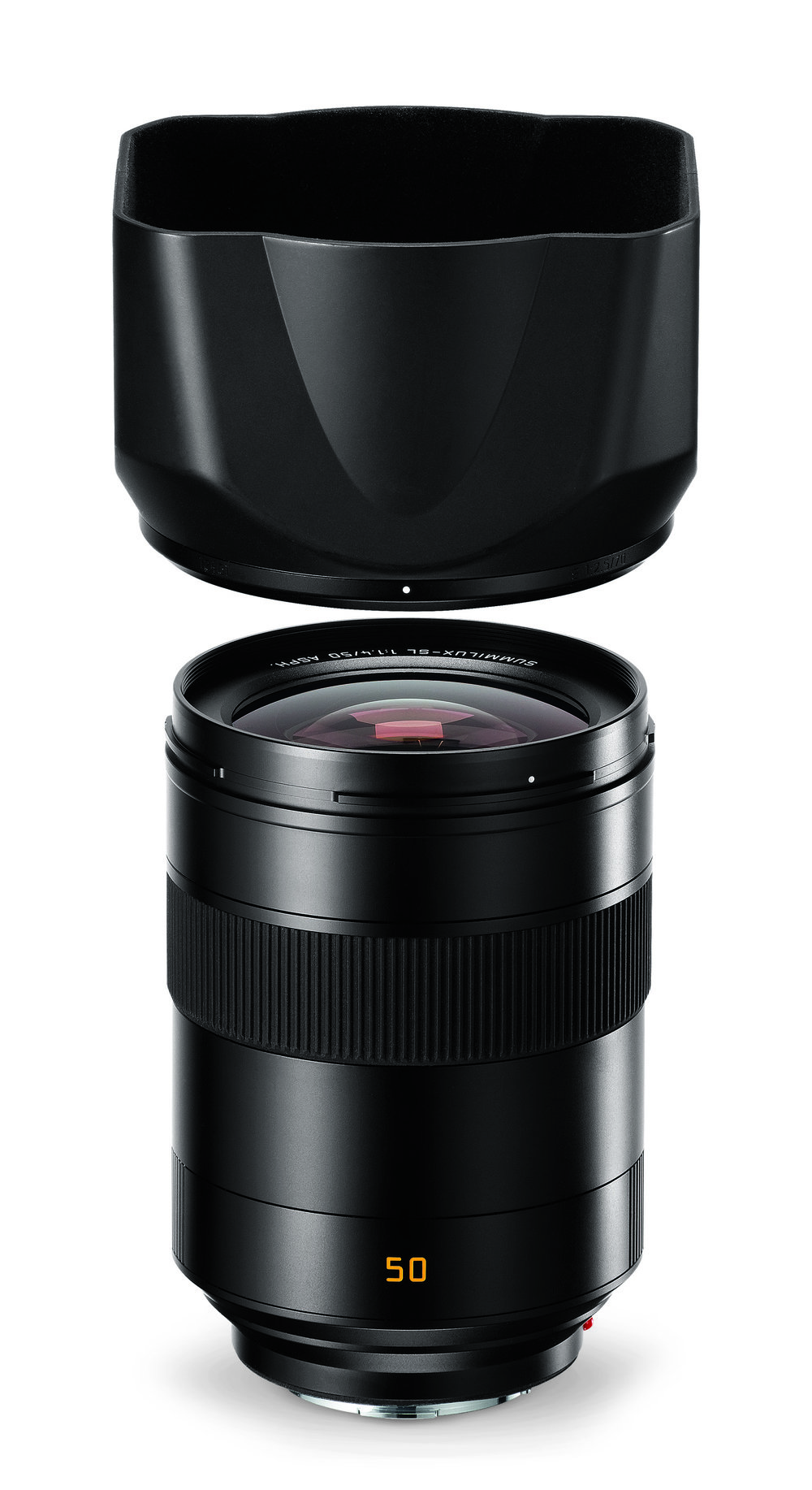
This was a very subjective impression and we should reserve judgment until the tests come out or until I’ve prised a road test example out of Leica’s hands. The SL fifty is undoubtedly a very competent prime in terms of image quality. It is right up there with the Apo-Cron according to Leica, but it failed to kindle the anticipated lust in my bosom. Now there’s a bit of cash saved.
DPReview had this to say about the 50mm Summilux: “Autofocus on the Summilux-SL 50mm F1.4 is painfully slow. Absurdly slow. The lens is also crazy-sharp, but don’t expect to be shooting much in the way of moving objects with it.”
To my mind, the 24-90mm Vario-Elmarit SL offers quicker focus — which is definitely surprising — and is not that much longer (14mm) or heavier (75g) than the 50mm prime. The zoom is slower in aperture terms but overall it’s so good that it puts into question the need for the 50mm Summilux-SL — especially if you have an Summilux-M or Noctilux-M waiting in the wings for low-light or for razor-thin depth of field when needed.
What did surprise me, though, was George’s reaction to the SL as a camera. Contrary to my expectations he wasn’t put off by the weight, instead revelling in the added security afforded by the substantial integral grip, especially when we bolted on the heavy Noctilux-M or the even heavier 50mm Summilux-SL.
Magnificent
But the star in the SL’s firmament, as far as George is concerned, is that magnificent 4.4MP viewfinder. Everyone loves it and it is no surprise to find that it is currently the best mirrorless-camera finder on the market. As I discovered some months ago, the Noctilux comes into its own on the SL. With the aid of focus magnification, portraiture in poor light is a doddle in comparison with using the same lens on an M rangefinder. It is notoriously difficult to focus at 0.95 on the M but considerably happier when bolted to the SL. The Noctilux-M is 365g lighter and much smaller than the 50mm Summilux-SL, and it looks the part on the SL. Most M lenses, by comparison, look long and thin on the SL against that black slab of a body.
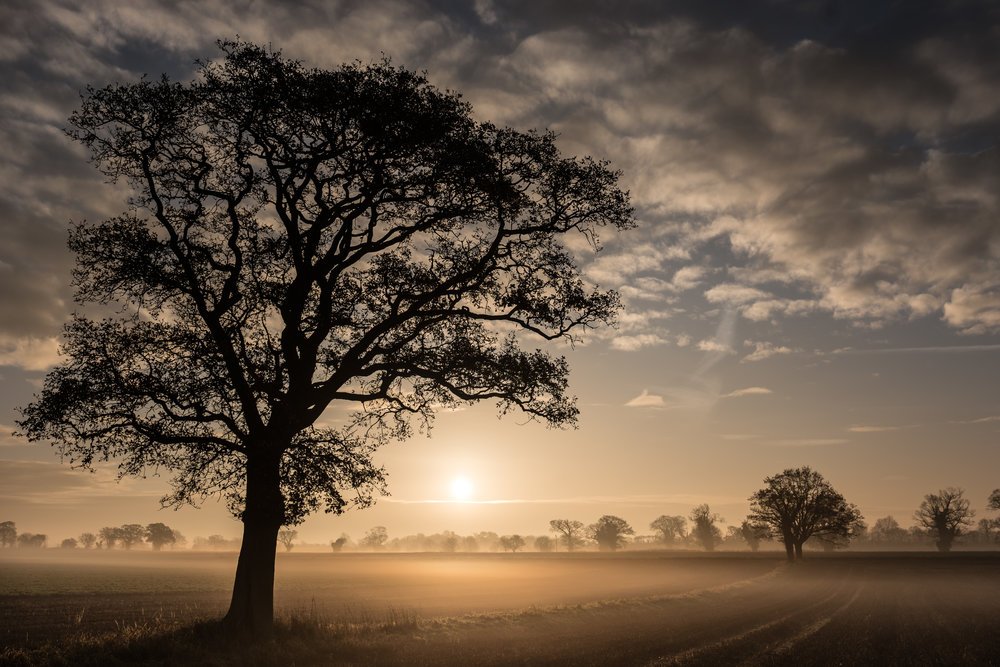
Much to my astonishment, George was captivated by the SL and started to wonder whether it could be his next camera. In some ways he found it more impressive that the M10 — mainly, I suspect, because of the revolution it creates in Noctilux usability. We didn’t have the opportunity to mount the Visoflex EVF to the M10 and this, perhaps, was a great mistake as I will discuss later.
My take on all this, lenswise at least, is that I would hesitate to buy the large SL prime, despite the autofocus, and perhaps rely on a good M fifty, especially the Apo-Cron or the Nocti. Possibly, too, both are better investments than the autofocus lens.
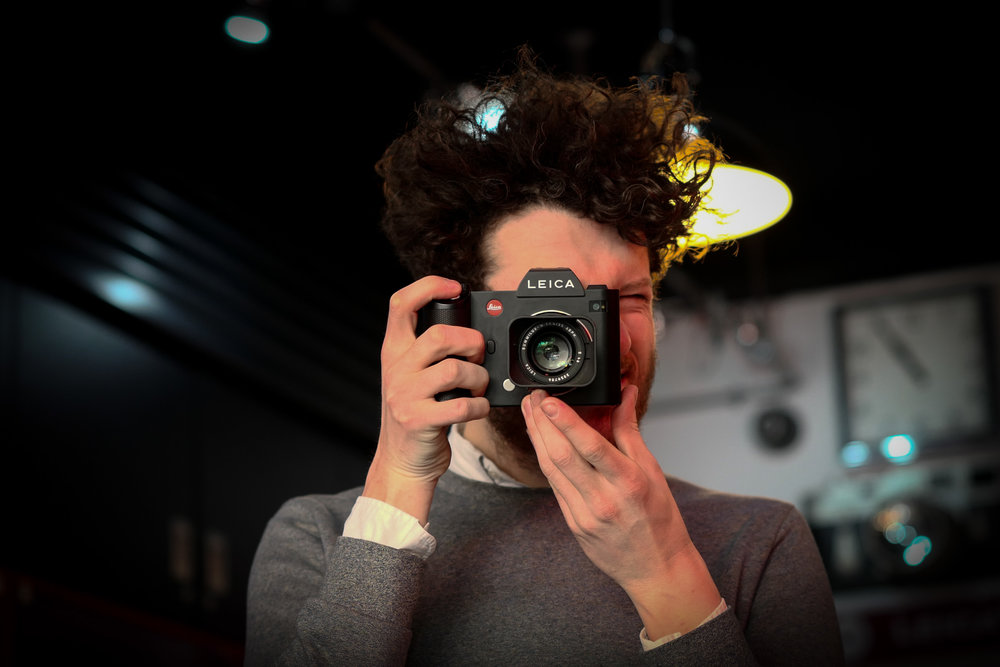
Food for thought
Later over coffee we discussed the merits of these two cameras. George isn’t rushing to replace his M240 but he now has a new dilemma: SL or M10. It’s something to mull over at leisure. Personally, I can see the advantages of both cameras and this underlines Leica’s wisdom in creating a clear line in scope between the all-bells-and-whistles electronic SL and the back-to-the-future M10 rangefinder. However, I would like George to try the M10 with the Visoflex finder before making a final decision.
George went back to Waterloo to get his train home while I set off to meet Friend No.2, the irrepressible Evris Papanikolas — he of TieHerUp camera strap fame — who had been visiting his London distributor, Red Dot Cameras. We hooked up at his hotel in Bloomsbury for another coffee and more camera chat.
Never a light traveller, Evris staggered into the bar with one of the largest camera bags I’ve seen (his own confection, a leather TieHerUp bag). He proceeded to produce cameras and lenses like rabbits from the hat. First came his SL with THAT lens attached; the 50mm Summilux-SL had just been acquired from Red Dot. Then popped out a brand new Leica Q, the titanium-coloured model, of which I thoroughly approved. Wonderful camera. Finally, out of the voluminous satchel appeared Evris’s new black-chrome M10 which came from the local Leica distributor in Cyprus.
So many cameras, so much bag. The man must have shoulders of steel. But this medley of Leica’s finest provided the perfect opportunity for a discussion on the merits of the SL and the M10. First, though, why so many cameras in one bag? Evris’s excuse is that he needs lots of cameras in order to take photographs of them with his straps attached. A likely story. It’s the same excuse I use about needing lots of different cameras to feed the blog…..
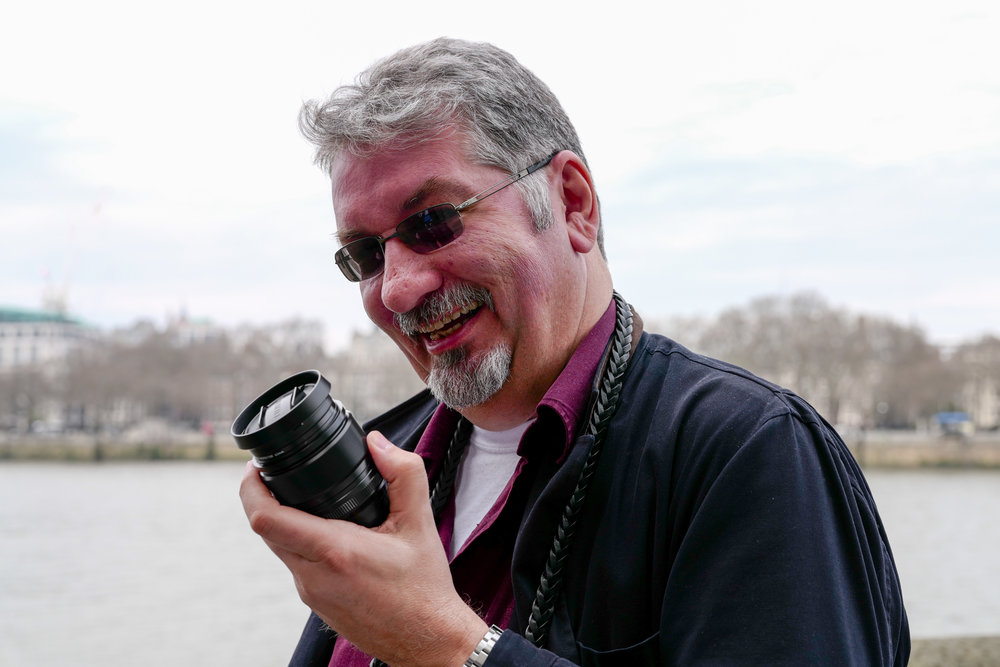
Auto magnification
Evris, in common with everyone I’ve met, loves the M10. He’s also a fan of the SL and agrees with George on the stellar merits of that viewfinder. Despite this, the electronic Visoflex on the M10 is helping him revise his opinionss. Indeed, he believes that the M10 (together with the Visoflex when needed) is now capable of doing more for M lenses than the SL: “You don’t need the SL for M lenses any more,” he says. Notwithstanding George’s earlier findings about the marriage of the Noctilux and the SL, the ability to use the Visoflex — which is light years ahead of the old M240 VF-2 — transforms the M10.
As Evris points out, the one big advantage of using an electronic viewfinder on the M is that the rangefinder linkage tells the camera when the focus ring is being moved. Thus, it is possible to set up auto magnification, something that makes accurate focus at wide apertures much quicker. This makes the M10 better than the SL for M lenses because the SL — in common with all other mirrorless cameras — cannot detect focus ring movement. Hence, it is necessary to prod a button (I use the centre button of the joystick) to initiate magnification.
We can conclude, therefore, that the M10 is likely to win back some SL users who had moved over to get the benefit of the EVF, especially with wide-angle lenses and those such as the Summiluxes and the Noctilux with critical wide-open adjustment.
The arrival of the M10 is making Evris wonder whether or not he should keep hold of the SL, despite liking the camera so much. Although he now has the 50mm Summilux-SL, he is concerned about the overall bulk and weight. He doesn’t see himself using this gigantic lens for street photography, for instance. And nor do I. I suspect that for this purpose the M10 — with or without the Visoflex — is a much more sensible choice. On the other hand, if you need a zoom (such as the remarkable 24-90) or want to do video, the SL is the natural choice.
There is one important way in which the SL is better for use with fast M lenses. Even the light-hungry Noctilux can be used fully open in daylight because the SL’s electronic shutter offers speeds up to 1/16,000s. That’s two stops faster than the M10 which tops out at 1/4000s. Therefore, if your object is to make full use of the extremely narrow depth of field provided by the Noctilux (or Summilux for that matter) the SL is a better choice. If you wish to do the same sort of photography with the M10 you will need to screw an ND Filter to the lens. Of course, if your main interest in these fast lenses is for use in low-light conditions, the M10 will perform as well as the SL.
Slim Jim
We discussed the new smaller dimensions of the M10 and Evris agrees with George and me that it feels much smaller in the hands than the M240. On the other hand, we were not entirely sure if the M10 is noticeably smaller than the M9. This time it was my turn to open my (little) bag and produce the camera du jour. No, not the SL nor the M10, but the “ancient” Mark I Monochrom, the old trooper that took Berlin by storm way back in 2012. This out-dated shooter still captivates with its abilities, despite being a whole generation adrift. Our interest centred, however, on the base plates of the two cameras, the M9-based Monochrom and the M10.

Both Evris and I were surprised to find that the baseplate of the M10 (and therefore the depth of the camera) was several millimetres smaller than that of the M9. We didn’t have an M240 to compare, but that would have shown an even bigger difference. So the M10 really is the smallest of the bunch, the slimmest digital M ever. Back in 2014 at Photokina Stefan Daniel told me that the factory’s ultimate ambition was to produce a digital M that would be no bigger than the M3. Well, they’ve done it, at least as far as depth is concerned. The M3-M4 manual-exposure cameras were a tad lower because of the absence of electronics, but that’s the only real difference.
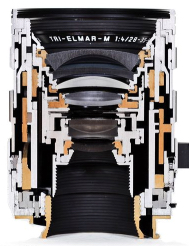
Incidentally, attached to the Monochrom was an even older and unusual lens, the 28-35-50 Tri-Elmar-M. Known as the MATE (Medium-Angle-Tri-Elmar), it was discontinued in 2007, allegedly because it was too expensive to make. It is the nearest you’ll get to an M zoom (other than the still-current 16-18-21 Tri-Elmar — the WATE — or an adapted R lens).
All matey
Despite the slow maximum aperture of f/4, I find the MATE perfect for general city and street photography. It’s generally set by me to f/8 to achieve a wide depth of field, preferable for quick street photography, but I can choose between a wide-angle 28mm for architecture or 50mm for portraiture. In the middle is the sweet-spot street focal length of 35mm. I’m planning a future feature devoted to this lens.
As another aside, Evris had a selection of TieHerUp straps with him. Star of this particular show was his new slim M10 strap fashioned on the popular Rock n’Roll design. It’s a lovely piece of kit and has a unique feature — a few red links to one side which nicely complements the Leica. See the picture at the top of this article. Since the strap and camera are all black, the red highlight is all the more catching. These straps make up a limited edition and Evris has promised me one, complete with my name engraved. Joy. All I need now is my own M10 which I have ordered from Red Dot Cameras and which should come soon.
So what do we conclude from a full day of equipment navel gazing? First, a good electronic viewfinder does have advantages for some M lenses. George was entranced by the view through the SL’s massive finder. Second, the M10 with the Visoflex, is almost as good as the SL in this respect and, in some ways (such as auto focus magnification) has the edge on the bigger camera. Indeed, the combination of brighter, bigger rangefinder and excellent EVF tips the balance in favour of the M10. Only if you want autofocus and zoom does the SL win out for our sort of photography.
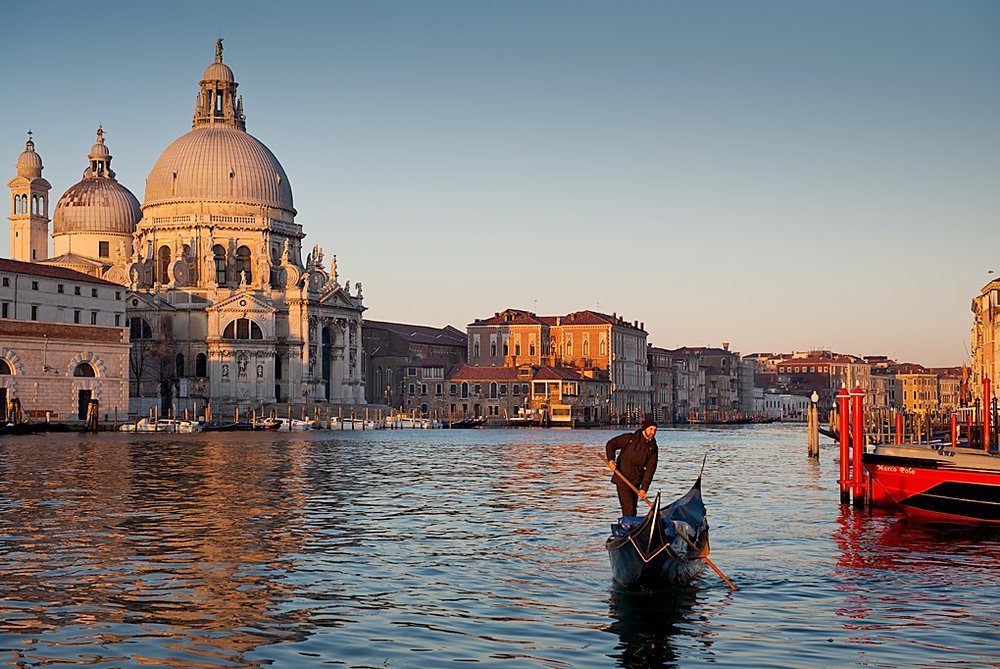
Light and nimble
Looking at the SL and 50mm Summilux-SL sitting site-by-side with the M10 and 50mm Summulux-M, there is no question that the M10 is a better bet for manual-focus lenses. It is far more discreet, lighter and nimble. It provides a modular approach. While the SL has everything built in, the M can be adapted to your mood and to your weight tolerance on the day. Add the EVF when you need it, choose the M grip for heavier lenses, mount the thumb grip for unobtrusive street work. The M10 is the more versatile camera. With the EVF mounted on the M10, this camera will perform just as well as the SL and will produce equally impressive results.
Only if you need autofocus and video is the SL the natural choice. Zoom, too, is a preserve of the electronic SL. But my little Tri-Elmar, though limited to 28-35-50, is a way of achieving a semblance of zoom in the rangefinder system. It weights only 370g and fits in the pocket. It’s a great pity they no longer make it.
I’m now looking forward even more to the arrival of my own M10. I’ve already earmarked it as the Macfilos Leica of the Year. In 2015 the Leica Q occupied top spot. Then, last year, the quirky M-D took the crown because it is just so focused and is a blast to use. This year I’ll be concentrating on the M10.
[Postscript on the 50mm Summilux-SL: Since finishing this article I’ve had a look at Sean Reid’s comprehensive review of this lens. He is impressed with it, particularly with the fine resolution. He describes manual focus as exceptional but believes that the autofocus is not class leading but is competent. It is “decent but might improve with further firmware upgrades”. AF is particularly wanting in low-light conditions (as I experienced in the Leica Mayfair Store) but improves considerably with better lighting. You can read the full review here but bear in mind that you need to subscribe to the site. It’s well worth it if you want the best independent camera and lens reviews.]
_______________
- Jonathan Slack’s one-year review of the Leica SL
- Find more excellent photographs from George James on his web site
- Subscribe to Macfilos for free updates on articles as they are published. Read more here
- Want to make a comment on this article but having problems? Please read this

Leica SL 色澤飽和度不足 也不夠 . 如果距離在20 meter之內 還算好 . 至於遠距離的天空藍色 .色澤淡 . 中距離 綠色部分 也不夠飽滿 . 如果和 M10 M9 Q 這些系列作比較 . SL抵不過他們 . 當然僅能跟SONY A9 A7R3 色澤相比 . 但是價錢只有一半 !
Hi Max,
我不能一口斷定。 你指的是JPEG還是RAW檔案? 我一直認為SL在圖像質素上與M和Q相等,但是我非常欣賞索尼a7III。我已經使用了幾個月,我同意價格在選擇相機時是一個重要的因素。
Mike
Thanks for great article, very helpful 🙂
I’ve been using M10 for 2 months, but I’m considering SL now because 3 reasons
1) focusing M lens on SL seems more comfortable to me
2) even SL is slightly heavier than M10, but due to ergo grip, SL feels easier to hold than M10 with thumb
3) I keep fuji T1 only for a few occasions that I need zoom, but SL could be one solution of combining M lens + AF zoom.
However, at the same time, I fully agree the merit/attractiveness of M10. What do you think about 2 options below?
Option1) M10 + visoflex with 35lux, 50lux (with fuji X-T1 zoom)
Option2) SL + 28 elmarit, 50 noctilux + 2890zoom
I rarely use zoom nor AF, but I need them a few times (for my kid’s event etc)
Most of my shootings are portrait of my family/kids and city snaps.
Many thanks in advance.
Joon
Hi Joon,
It’s the same dilemma I faced, except in my case the mirrorless zoom alternative was micro four-thirds instead of Fuji. Focus with certain M lenses (such as the Noctilux you mention) can be easier on the SL. But for general use (Elmarits, Summicrons and, even, Summiluxes) I find the M10 more satisfying. The big question is whether you can cope with the weight and bulk of the SL and the 24-90mm zoom. It’s an excellent outfit and you will not fail to be impressed. But it is heavy, as I made clear in the article. Too heavy for me, sadly, and that’s why I decided to make the M10 by principal full-frame camera. I also have the TL system and that will be developed more aggressively by Leica in the near future. In many ways the TL is shaping up to be a mini SL and, if you want to stay in the Leica camp, it will soon be a genuine competitor for the Fuji X-Pro. When all is said, this comes down to personal preference. I can advise, of course, based on long use of most cameras in the Leica range, but I can’t transfer emotion or reproduce accurately another photographers shooting requirements. Making a decision is fun, though…..
Thanks for advise and insight. You are right making decision is fun as unlimited imaginary purchase 🙂
SL with 2890 is heavy absolutely. But SL with elmarit 28 was so neat and light to use. With nocti was a tolerable heavy but great mertit to focus 0.95 better. M with visoflex doesn’t look cool but must be reasonable choice. Anyway highly appreciated your article and answers. Thanks!
THANK YOU, THANK YOU, I have read and watch just about all on SL and M10 that is available on the net. Sold my M240 with a plan to get the M10, but then it started. One minute it was M10 and then SL for various reasons. It has been like that for several weeks until I read your article, final decision had been made: M10. Thanks again. Vladimir.
Thanks, Vladimir and I’m glad the article was of help. I do have a love for the SL but find the M10 more manageable. If you can manage the weight, though, the SL is a fine camera.
Hi Michael,
Great article about the 2 meetings on Saturday…I have to be careful of what I say when we meet 🙂
And something that surprised me… in contrary to what I told you… the Summilux 50SL is damn fast, after setting factory settings to my SL!!! its a keeper! ts very quick actually for my needs, I was impressed. I don’t have knowledge of the focusing speed of the 24-90 to compare
Thanks Anthony for your kind comments on my Venice photographs, much appreciated.
George
I just gave up my SL (and T, plus lenses) since I was entirely unhappy with the autofocus and the heavy SL lenses, and returned to the M240 with great relief. I kept my Visioflex from the T however and have my name down for the M10. I really prefer the absence of adapters in my life! Although I admit to giving a new life to my R Summilux 50/1.4 on the M.
Having lived in Venice and photographed it since my first Kershaw 120 camera at the age of 15, George’s photos are really wonderful in capturing the light and atmosphere.
Thanks for this post
Thanks, Anthony. I tend to agree with you. I will wait until I’ve had some experience with the M10 before pronouncing finally on the SL. I still like the SL for specific events where the zoom is useful and you can be sure there are no compromises (as, for instance, there always is with a lighter but faster zoom outfit such as the OM-D with 12-40mm.). But as a day-to-day companion the SL is too big and heavy for me. While it is fun to use with M lenses, thus smaller and lighter, there now doesn’t seem much point. A few weeks with the M10 will be interesting.
I am sure George will be pleased with your comment on his site and I will draw this to his attention.
Mike
Thank you Mike!
As you know I’ve never bonded with the Ms though I’ve tried (the right lens is always the one in the bag and not on the M!) but I’ve bonded with just about every R and SL you can name and got fantastic results from all of them…especially, I need hardly add, from the SL and the 24-90 which covers 97% of what I mainline on i.e. all but bird photography.
You might like to check the demo SL at the Mayfair Store. When I tried the 50/1.4 on it it was as you remark painfully slow to focus – but that was down to the fact that at the time the necessary firmware update (which speeds up the 50/1.4 focus) had not been done…
Thanks for the heads up, John. I did try the store’s resident 50/1.4 on their SL last Saturday. That’s what set off my comments on the slowness of the lens. I was a careful to add, though, that we have to wait to see what it performs like on test. I also own the SL and I love the 24-90 for its results, if not its bulk and weight. But, as I said in the article, it isn’t much bigger than the 50/1.4 and I can see the 24-90 being more versatile for the sort of daylight events I tend to prefer. I have no quibbles about the imagine quality of the zoom and, if I need a fast prime there’s always the 50/1.4 M. Still, the jury’s out.
Excellent analysis Mike.
Like your friend George, I am still enjoying the M-P that I acquired somewhere? However, even though I haven’t commented so far, the M10 is very impressive, those few 1/16ths in depth make it so much more like the M experience. By dropping the video capabilities, but retaining the live view feature, Leica have this time succeeded in not throwing the baby out with the bathwater.
I don’t like the red dot though, so I will have to wait for the M10-P!
On the subject of the MATE though Mike, I have mentioned it a couple of times, but I cannot find it for the life of me, it was probably on one of the many Leica rumour sites, there is speculation about the emergence of a Leica M zoom… The same specification as the SL "kit lens" (bl**dy good), but without auto focus…
… Similar to your overall conclusion that the new M10 is more user friendly than the SL, a zoom lens is finally a possibility on the M when accompanied with the Visoflex.
Thanks, Stephen. I now remember your mentioning the possibility of a zoom and I think I’ve read about it somewhere as well. It seems to be an obvious next move and I wouldn’t be at all surprised to see one. It would fit in with my "modular approach". A good 24-90 with the same optical characteristics as the Vario-Elmarit-SL would be popular. Without all the autofocus gizmos it could be thinner, a smaller version of an R lens. Indeed, Fingers crossed.